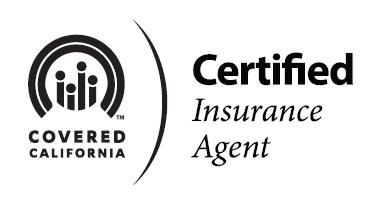#Advantage: Working with a Covered California “Certified Agent”
“Covered California” is the new public health insurance exchange in the state of California. If you live California, you’ve probably heard quite a bit about it over the past 6 months. These exchanges are a new way to buy health insurance and are a major part of healthcare reform.
The California exchange opened back in October of 2013. Since then, hundreds of thousands of Californians have enrolled in individual insurance plans there. Many of these plans have been subsidized by Advance Premium Tax Credits (or APTCs). These APTCs can substantially reduce the monthly cost of health insurance.
If you’ve taken a look at Covered California, you’ll know that there are various ways in which to enroll. Some of them include:
- Online. You can set up an online account and enroll via the internet. You can also assign a Certified Insurance Agent to your case through your online portal.
- Over the phone. You can call Covered California’s phone number and enroll with a service agent.
- In person. You can enroll in person with A) Certified Enrollment Entities, B) Certified Enrollment Counselors, or C) Certified Insurance Agents.
The purpose of this blog post is to explain some of the advantages of enrolling with a Certified Insurance Agent.

Here are some really good reasons to work with a Covered California “Certified Insurance Agent”:
- Certified Agents are Licensed Professionals: Any insurance agent that is certified with Covered California is also licensed with the state department of insurance. Many of these agents also have years of experience and know the industry well.
- A Single Point of Contact: This is one of the biggest advantages. You’ll have a single point of contact if you enroll with a certified agent. You can pick up the phone or send an email to that person anytime. If you need to make changes or have questions in the future, you’ll have someone familiar to work with. However, if you enroll with a Covered California customer service rep over the phone, or a Certified Enrollment Counselor, you may speak with different people each time.
- Certified Agents are Appointed Directly with the Insurance Companies: Insurance agents are appointed and have a direct relationship with the insurance companies. This can help with quick, effective, and efficient customer service.
- Certified Agents Have Passed Rigorous Certification Requirements: These are people that have gone through extensive training and testing to obtain their certified status.
- No Cost. You can work with a Covered California “Certified Agent” at no cost to you. Compensation is built into every insurance plan, regardless of whether-or-not you decide to work with an agent.
As you can see, there are a number of good reasons to work with a Covered California “Certified Insurance Agent.” Look for this badge when searching for assistance from an agent or agency:

Policy Advantage Insurance Services is certified. Please contact us if you have questions, or need ongoing help at Covered California.
Thanks for stopping by, we hope you found our information to be valuable. Check back at our blog to get further information about funding healthcare. Also, please share with your friends, clients, colleagues, and family. Here are a few of our other information outlets:
Home Page: https://policyadvantage.com
Twitter: http://www.twitter.com/PolicyAdvantage
Facebook: http://www.facebook.com/PolicyAdvantage
YouTube: http://www.youtube.com/PolicyAdvantage
Pinterest: http://www.pinterest.com/PolicyAdvantage
Word Press: http://www.policyadvantage.wordpress.com




